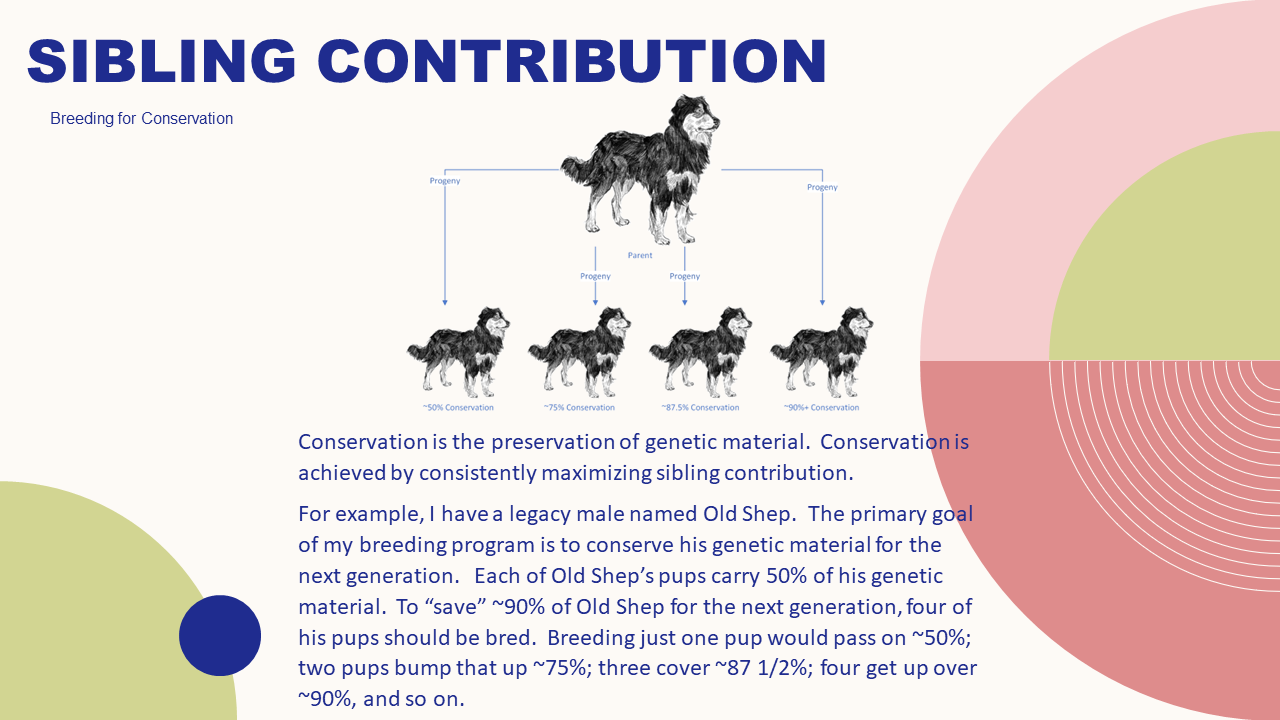Over the course of my professional career, I have learned the value of engaging with subject matter experts when it comes to situations which require critical decision making. To succeed, one cannot be afraid to ask for help and advice. With this lesson in hand, I elected to engage with a conservancy organization on behalf of the Old-fashioned Black and Tan English Shepherd Association. I furnished them with a detailed breakdown of the bloodline population we have in hand, and I asked them for observations and guidance. I received a lengthy response which I am still studying and digesting. Overall, I am happy with the response I received. Where appropriate, I will share and use the response to achieve our mission.
Our bloodline’s situation is basically the same as a population that has gone through what is termed as a “severe bottleneck.”[1]“Bottlenecks and Founder Effects – Understanding Evolution,” October 7, 2021. https://evolution.berkeley.edu/bottlenecks-and-founder-effects/ As such, strategies for post-bottleneck recovery are applicable. Our goal should be to increase population size without losing our existing genetic diversity. When the priority is population growth, the means is to “select for nothing.” Selection, by definition, is about reducing diversity. We want to minimize/prevent further loss of genetic diversity — to whit, we want to save what we have. With this goal in mind, maximizing sibling contribution is one important principle to be followed. If we only have one pup per litter used for breeding at each generation, we will be losing diversity fast. Each pup carries 50% of their parents’ genetic info; if only one pup is used for next generation breeding, we only “save” 50% of what the parents had to contribute; two pups per generation bumps that up 75%; three cover 87 1/2%; four gets us up over 90%… and so on.
So, how do we do that? How do we maximize sibling contribution?
- We maximize sibling contribution by seeking out buyers who are willing to keep their male pups intact. These potential stud dog owners don’t all have to be “breeders”. We can term these special homes as “bloodline stewards”.
- Likewise, current breeders can place female pups with an agreement to allow at least a single breeding down the road. Placing pups this way takes more work, but it allows mentoring and growth in our breeder network.
So, to put a bow on this brief introductory discussion; to achieve our mission we need to 1) create bloodline stewards when placing male pups, and 2) place females in homes where they can be bred at least once. I will continue to ask our constituent adopters and our cooperating breeders to keep these principles in mind with placing puppies.
References
| ↑1 | “Bottlenecks and Founder Effects – Understanding Evolution,” October 7, 2021. https://evolution.berkeley.edu/bottlenecks-and-founder-effects/ |
|---|


1 thought on “Bloodline stewardship; maximize sibling contribution”
Comments are closed.